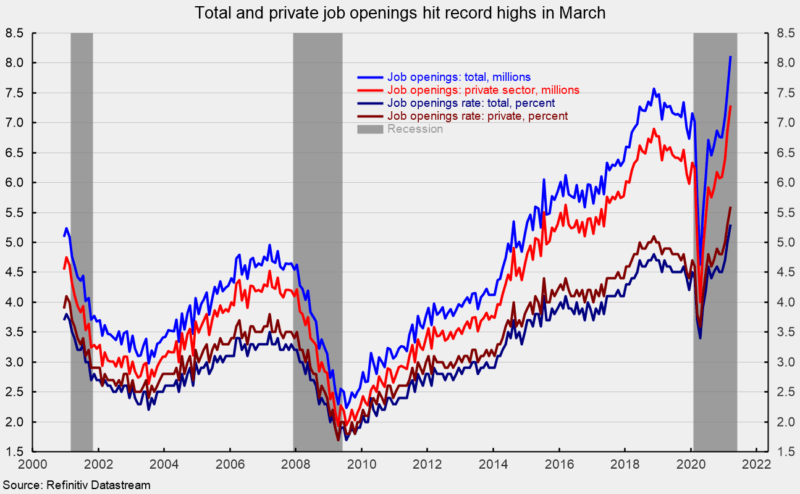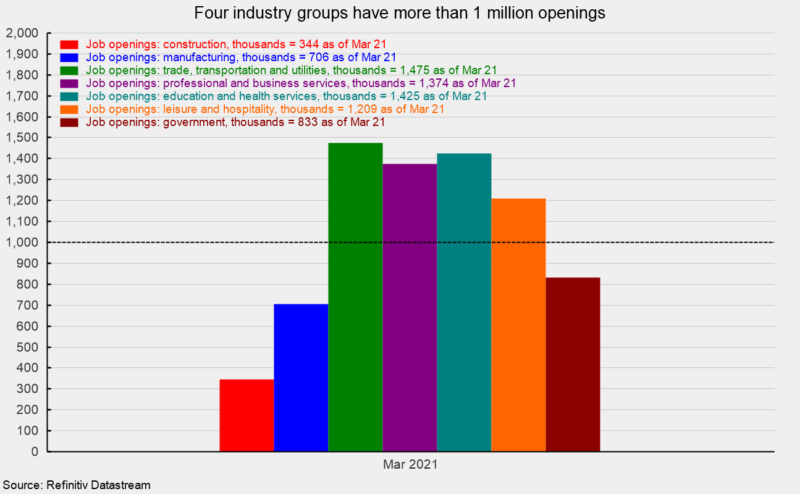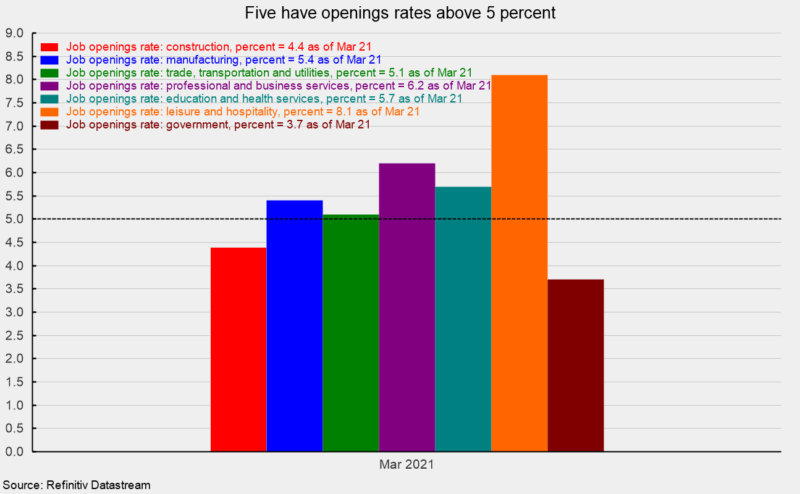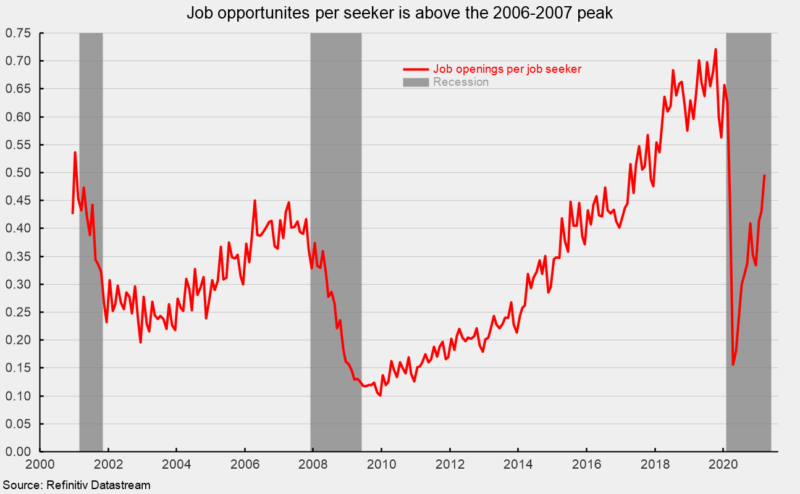Job Openings Hit a Record High in March
The latest Job Openings and Labor Turnover Survey from the Bureau of Labor Statistics shows the total number of job openings in the economy rose to 8.123 million in March, up from 7.526 million in February. The number of open positions in the private sector increased to 7.290 million in March, up from 6.868 million in February (see first chart).
The total job openings rate, openings divided by the sum of jobs plus openings, reached 5.3 percent in March while the private-sector job-openings rate increased to 5.6 percent, up from 5.3 percent in February. All four measures are at new highs since these data began in 2000 (see first chart).
The industries with the largest number of openings were education and health care (1.425 million), professional and business services (1.374 million), trade, transportation, and utilities (1.475 million), and leisure and hospitality (1.209 million; see second chart).
The highest openings rates were in leisure and hospitality (8.1 percent), professional and business services (6.2 percent), education and health care (5.7 percent), manufacturing (5.4 percent) and trade, transportation, and utilities (5.1 percent; see third chart).
The rise in private job openings was a function of hires, separations and changing labor requirements. Private hires in March rose to 5.632 million from 5.490 million in February. At the same time, the number of private-sector separations fell to 4.998 million in March, down from February’s 5.078 million. Within separations, private quits were 3.331 million (versus 3.184 million in February) and layoffs were 1.394 million, down from 1.636 million in the prior month.
The total separations rate fell to 3.7 percent from 3.8 percent in the prior month with the private sector experiencing a rate of 4.1 percent, down 0.1 percentage points from 4.2 percent February.
From the worker perspective, labor market conditions improved again in March. The number of openings per job seeker (unemployed plus those not in the labor force but who want a job) rose to 0.497 in March, up sharply from 0.430 in February, and well above the April 2020 low of 0.156 but still well below the 0.721 peak in October 2019. In the economic expansion of the 2000s, the number of openings per workers peaked at 0.450 (see fourth chart).
Overall, the data relating to the labor market have improved significantly in recent months despite a disappointing employment report for April (released on Friday, May 7). While that report showed a much slower pace of gain in payroll employment than economists had expected, today’s data on job openings and turnover along with a declining trend in the number of weekly initial claims for unemployment insurance provide a strong basis for optimism. Furthermore, the ongoing distribution of vaccines is leading to significant reductions of restrictive government lockdown rules. As these rules are vanquished, economic activity accelerates.









